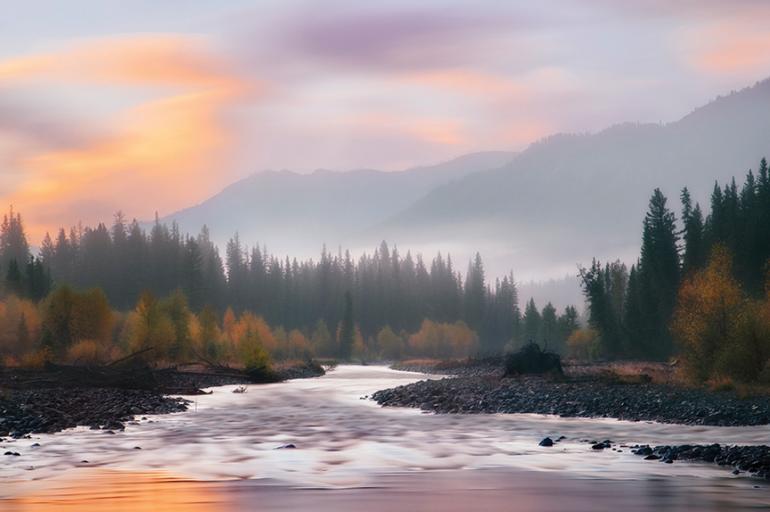Hunt the Water
Considerations for you and your dog.
It’s hard to think of another part of the country that offers wing-shooters a greater variety of feathered game than Montana. From grouse, partridge, and pheasants in upland cover to ducks and geese on streams, lakes, and potholes, Montana bird hunters have it about as good as it ever gets.
When evaluating new places, I always consider water first. Everything we hunt needs water—ducks and geese because they live there, upland game because waterways often provide the optimal combination of shelter and nutrition. As with any endeavor in the field, adapting technique and going prepared optimize the chances of hunting safely and comfortably, and enjoying a great wild-game dinner at the end of the day.
As every hunter should learn at an early age, safety comes first. On average, 15 people die by drowning in Montana every year. Granted, the chance of that happening on a pheasant hunt are remote. However, any time watercraft are involved, either to set out duck decoys or to access river-bottom upland cover, common-sense precautions are mandatory—and that includes appropriate (and legal) flotation devices.
Water is most dangerous when it isn’t water at all, but ice. Falling through can turn into an emergency quickly, for hunters and especially for their dogs, especially when ice shelves partially or completely overlie running water. As a rule, never work a dog in moving water upstream from ice.
While serious accidents are rare, getting wet after falling through ice is common. The dogs won’t mind but I sure do, especially when I’m hunting in sub-zero temperatures. Just getting wet up to your knees can end a hunt quickly in such conditions. This is especially easy to do in the terrain around Bozeman, where the local hydrology produces spring-fed creeks. Because they issue from the ground at a constant temperature, these streams freeze slowly and irregularly—a prime reason why they produce such great late-season waterfowl hunting.
On streams like this, ice that will support your weight easily in one place may collapse beneath you in another. All ice looks the same under a couple of inches of fresh powder, so it’s best to travel on dry ground. If you have to cross a frozen stream, choose the location carefully (avoid areas of increased flow below beaver dams, for example) and proceed with caution. If you’re hunting on ice overlying water deeper than your waist, be sure to familiarize yourself with self-rescue techniques.
Footwear becomes a special consideration when hunting near waterways. Waders are often mandatory when hunting waterfowl even during the early season, especially if you plan to set out decoys. (You can sometimes get around this by using self-righting decoys that can be pitched onto the water from shore and carrying a collapsible boat-hook to retrieve them.) I spend a surprising amount of time hunting pheasants while wearing waders, since some of my favorite cover requires multiple creek-crossings to hunt it effectively. Chest waders are usually more practical for waterfowl over decoys, but they are clumsy. When hunting upland birds in creek-bottom habitat, I prefer hip waders. “Ankle-fit” models make hiking easier.
Water can become a tactical ally when hunting pheasants that would rather run than fly. They don’t swim, and hunters can use the bends in wandering prairie streams to their advantage by pushing running birds ahead of them through thick cover until they have nowhere else to go but up.
Game recovery—both a practical and an ethical concern—can be a challenge when hunting near water. There is simply no substitute for a trained retriever, and if you or your hunting partners don’t have one, you should probably be hunting somewhere else. During the early upland season, my German wirehair pointers do fine, but once temperatures drop or waterfowl become the quarry, I don’t leave home without one of my labs. Don’t worry about them getting cold and wet—they’re bred for the job and there’s nothing they’d rather be doing.
The legal aspects of hunting Montana waterways warrant discussion. Our stream-access law insures the public’s right to float navigable waterways and recreate between the mean highwater marks. It does not provide the right to shoot across private property or retrieve downed game from private land. In general, islands in larger rivers that were islands at the time of statehood lie in the public domain. Confusion arises when rivers naturally form new channels, creating islands that did not previously exist. Investigate legal rights and restrictions in the area you plan to hunt, and always respect private property. Most of our larger streams flow through public property at various points along the way, and GPS technology now makes these legally accessible lands easy to identify in the field.
Don’t be deterred by the prospect of ice, mud, wet feet, and wet dogs. Whether your interest lies in waterfowl, upland game, or both, Montana’s waterways offer wonderful wing-shooting opportunities—and a great excuse for owning a retriever. Or two.













